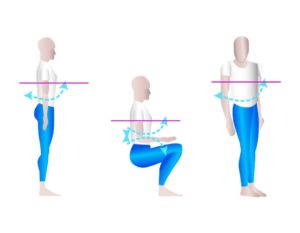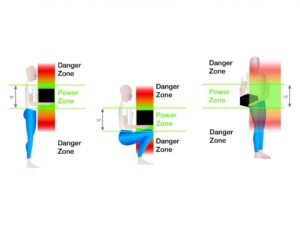Are You Having Pain While Working? Time to Look Beyond Ergonomics!
In the past several months, our work environment has completely changed! Many of are putting in long hours working from a home office that may or may not be ergonomically correct. We all know that prolonged sitting can be detrimental to your health, but what can you do to stay healthy if you have a desk job in the middle of a pandemic?
Part 1: Education Training and Understanding Pain/Injuries
The first step of preventing pain and injury, especially repetitive use, is first understanding how pain, injury and poor health occurs in the body. If we understand the downstream effects of sustained postures, we will have a better chance of positively effecting our health and reducing the chance of pain and injuries.
Our bodies are not designed to sit for prolonged periods of time. Movement is the key to breaking up these periods of static posture. Not only will you feel better but will break up the potential pain cycle.
Picture holding your wrists bent for 30 minutes. Eventually you will feel pain! The spine works the same way. After 20 minutes of sustained positions, your ligaments will begin to stretch to the current sustained position. Over time, this will create hypermobile joints (they move more than they should). As a result, your larger muscles will begin to take over in an attempt to stabilize these joints. Since the larger muscles are not primarily postural, they will become hypertonic, develop trigger points and become a source of pain. Additionally, your joints will adapt and not be able to move smoothly in normal ranges of motion. All of this creates muscle imbalances and compensation patterns which will lead to faulty movement patterns and potential future injuries to other parts of the body.
The nerves can be also affected. There are several entrapment sites (at the neck, back of the shoulder, elbow, forearm, and wrist) that can cause numbness and tingling. If these nerves are not treated, decreased sensation, strength and atrophy can result.
Dr Schreiber’s movement tips for the desk jockey
- Make movement a priority, especially while working!
- Set an alarm, every 20 minutes to perform some movement. We call this a microbreak.
- Use rock balls (we have these at the office!) under your legs, top of legs, between shoulder blades while at the desk.
- You must take breaks throughout the day. If you are having a hard time, schedule them in! A small walk or simple mobility routine will really help!
- Park at the farthest spot away to get more walking throughout the day. This can be the office, at the gym, or running errands.
- If you can walk while having a meeting, even better!
- Perform a home mobility program three times a day.
- Use a small side mirror to remind you of your posture at your desk.
- Use Sticky notes or calendar reminders to check your posture.
Dr Schreiber’s Micro-Break ideas!
It is important to build micro breaks into your daily routine. As such, Stanford also provides the following ideas for making breaks a part of the workday:
- Move the printer to an area that requires you to stand up and walk to get a printout.
- Stand up when talking on the phone (the use of a stand-up desk is also helpful)
- Go to the restroom or get a cup of coffee/water (frequently; remember the glass of water every hour).
- Break up continuous computer time with tasks such as checking phone messages, reading reports, etc.
Part 2: Body Positioning and Awareness
The key to injury prevention for the spine is to avoid improper positioning and movements that will cause undue stress. The Sternum Up, Power Zone and Abdominal Bracing will keep the spine in neutral, allow for proper bending at the hips and protect the spine. Here are easy ways you can implement this into your activities of daily living.
Sternum Up- Keeping the sternum up automatically sets the body into good posture and maintains:
- Neutral Spine: Maintaining good spinal alignment decreases the stress placed on the spine and discs.
a. Hip Hinging: Bending at the hips, and not the low back, decreases the stress placed on the low back and increases strength & power.

Power Zone- The zone that will optimize lifting strength and injury reduction.
- Bend your elbows at a 90-degree angle, and you are in the “Primary Power Zone.”
a. The area up to the shoulders and down to the hips is acceptable.
b. The more you can work in the “power zone” the less fatigue on your body

Abdominal Bracing- When all your core muscles work together, a “Super Stiffness” occurs, and all 3 layers of the abdominal wall are activated to protect and stabilize the spine and discs.
Without bending forward, contract the abdominal muscles (like you are about the get punched in your gut – feel them tighten with one hand) and the buttock muscles. You will feel the lower back muscles contract (with the other hand) when you contract your abs and buttocks. This is the abdominal brace! Maintaining this brace while working will significantly reduce the amount of pain you are having. This takes time to learn and develop. We are here for you! In the meantime, if you are having pain and it is affecting your productivity, call our Woodbury office for an appointment! 651-459-3171

